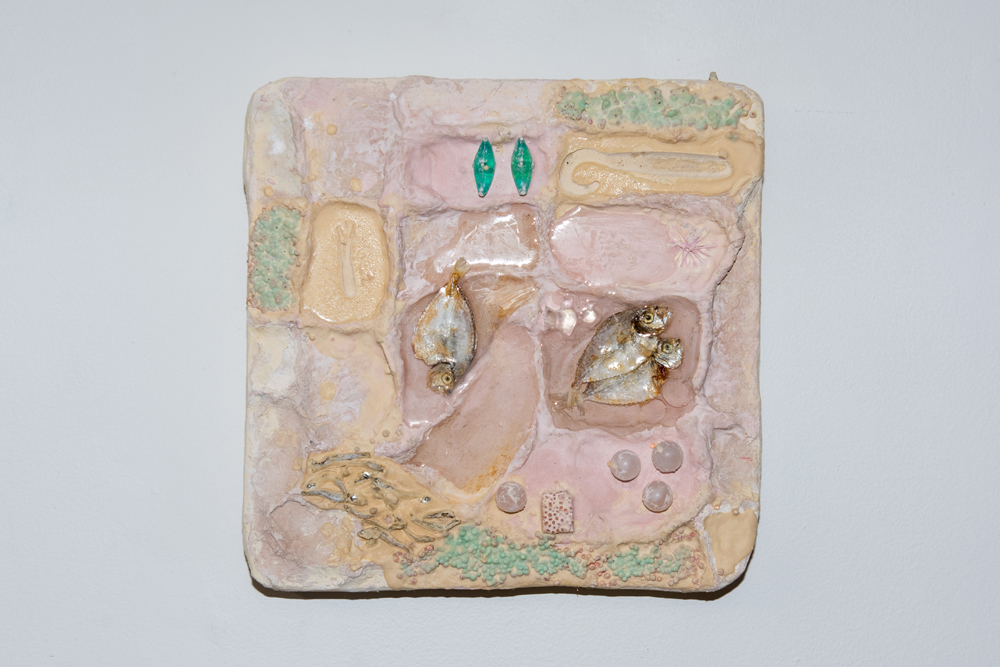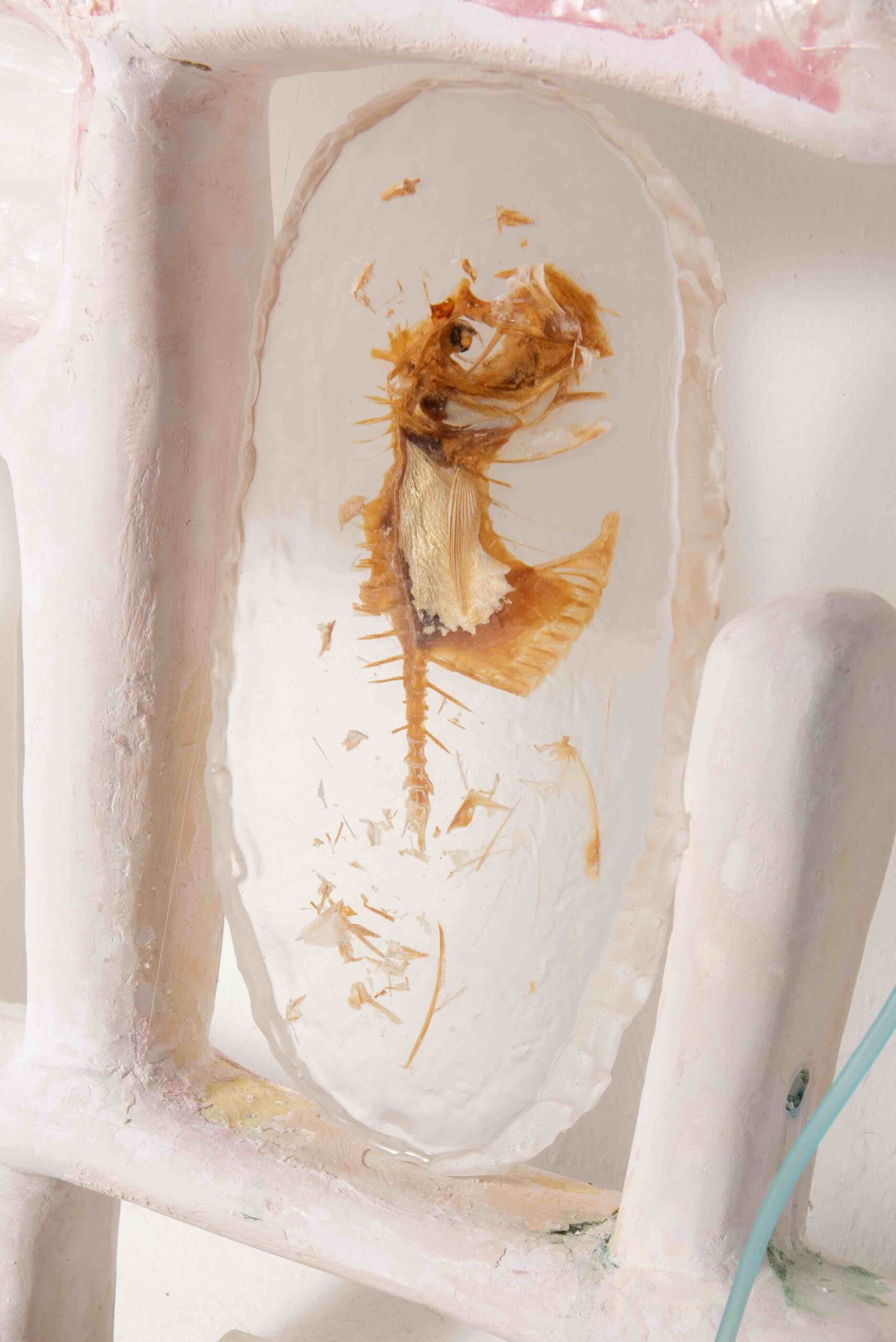
Sculptor Sasha Fishman has turned to working with materials that are, unlike the plastic-based resin she once used, more natural and, in some instances, biodegradable. Lately, she has experimented with common kitchen and pantry items, such as eggshells, gelatin, and beeswax, to fashion substrates for her sculptures, as well as decorative details within the works themselves. “It blew my mind that you could use these things that are just around,” she says, “because it opened up all of these doors.”
Fishman’s Pools addresses the consequences of factory fish farming and the ubiquitous presence of microplastics in our environment, particularly our water supply. Using a dye made from crushed avocado pits and turmeric to color the aqua resin base, Fishman dotted the border of the work with silica beads. Those represent the microbeads that were once used in facewashes but are now banned because of their pervasive existence in our water supply. Within the work, fish carcasses float belly-up in swirling eddies of polluted water. To her surprise, after Fishman completed the sculpture, the silica beads turned a patinated blue from their original clear form—the result of a chemical reaction within the materials themselves, and an instance of the art taking on a life of its own. “I really didn’t think about plastics before,” she says, “until I started spending this much time with them.”


